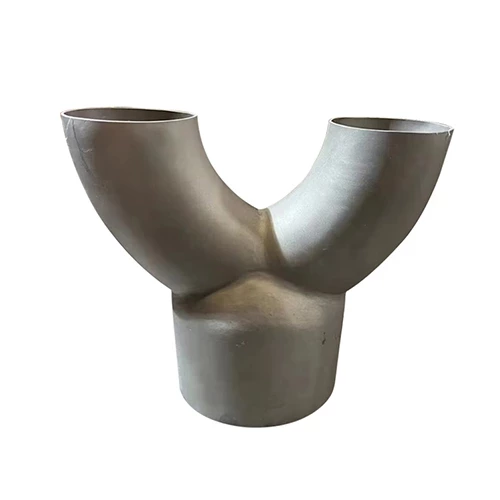Briefly Explain How To Identify The Material Of Stainless Steel Pipe Fittings And Elbows
Below, a brief description of the method for identifying stainless steel pipe fittings and Stainless Steel Weld Elbow materials:
1. Sulfuric acid test: The sulfuric acid immersion stainless steel elbow test can distinguish 302 and 304 from 316 and 317. The cut edges of the sample should be finely ground, then cleaned and passivated in nitric acid (specific gravity 1.42) with a volume concentration of 20~30% and a temperature of 60~66℃ for half an hour. The volume concentration of the sulfuric acid test solution is 10%, heated to 71℃. When 302 and 304 steel are immersed in this hot solution, they are corroded and produce a large number of bubbles, and the sample turns black within a few minutes; while the samples of 316 and 317 steel are not corroded or react very slowly (no bubbles are produced), and the sample does not change color within 10~15 minutes. If a sample with a known composition is tested simultaneously for approximate comparison, the test can be made more accurate.
2. Copper sulfate point test: The copper sulfate point test is a simple method to quickly distinguish ordinary carbon steel from all types of stainless steel. The concentration of the copper sulfate solution used is 5~10%. Before the spot test, the test area should be free of grease or various impurities, and a small area should be polished with a soft abrasive cloth, and then copper sulfate solution should be dripped into the cleaned area with a dropper. Ordinary carbon steel or iron will form a layer of surface copper in a few seconds, while the surface of stainless steel will not produce copper precipitation or show copper color.
3. Magnetic test: Magnetic test is a simple way to distinguish annealed austenitic stainless steel from ferritic stainless steel. Austenitic stainless steel is non-magnetic steel, but it will have a slight magnetism after cold working under large pressure; while pure chromium steel and low alloy steel are both strong magnetic steels.
4. Nitric acid point test: An obvious feature of stainless steel elbows is that they are inherently not afraid of corrosion in concentrated nitric acid and dilute nitric acid. This property makes it easy to distinguish from most other metals or alloys. However, high carbon 420 and 440 steels are slightly corroded when conducting nitric acid point tests, and non-ferrous metals will be corroded immediately when encountering concentrated nitric acid. Dilute nitric acid is highly corrosive to carbon steel.
Stainless steel stamping elbows have excellent corrosion resistance. The thin and solid oxide film on the surface of stainless steel makes it non-corrosive in all water qualities, even when buried underground. Therefore, it is suitable for all kinds of water quality. In addition to cleaning, there is no need to control the water quality. At the same time, there is no corrosion and excessive seepage, which can keep the water clean and hygienic, eliminate secondary pollution, and withstand high water flow impacts of up to 30 meters per second. During installation, the stainless steel stamping elbow can be directly installed on the pipeline according to the connection method and installed according to the location of use. In general, it can be installed at any position of the pipeline, but it needs to be sealed to prevent leakage and affect the normal operation of the pipeline. When the ball valve, stop valve, and gate valve of the elbow are used, they can only be fully opened or fully closed, and are not allowed to be used to adjust the flow to avoid sealing.
